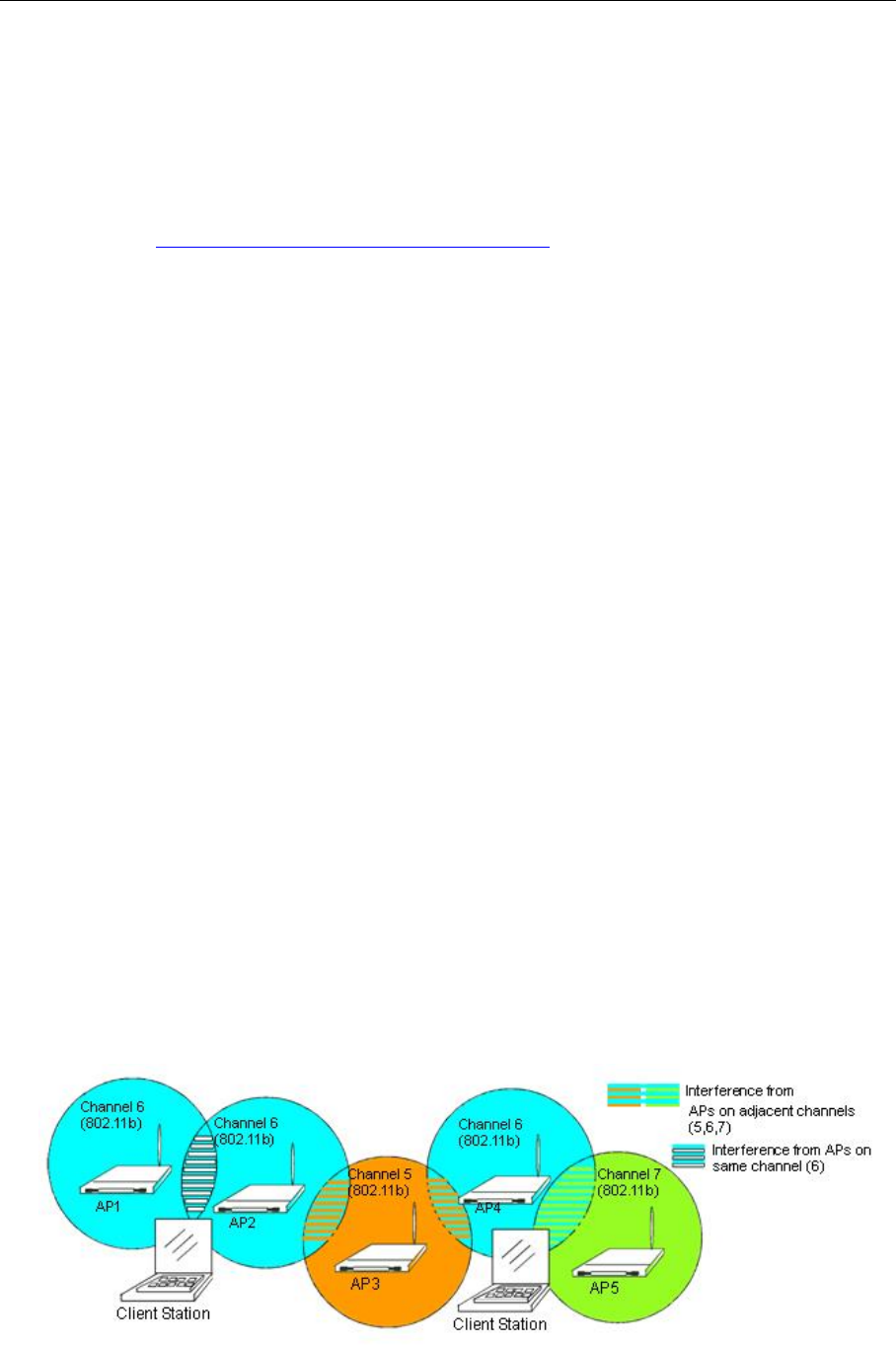
AT-TQ2403 Management Software User's Guide 47
Understanding Channel Management
When Channel Management is enabled, the AT-TQ2403 AP automatically assigns radio channels used by
clustered access points to reduce mutual interference (or interference with other access points outside
of its cluster). This maximizes Wi-Fi bandwidth and helps maintain the efficiency of communication over
your wireless network.
(You must start channel management to get automatic channel assignments; it is disabled by default on a
new AP. See “Stopping/Starting Automatic Channel Assignment
”.)
How it Works in a Nutshell
At a specified interval (the default is 1 hour) or on demand (click Update), the Channel Manager maps
APs to channel use and measures interference levels in the cluster. If significant channel interference is
detected, the Channel Manager automatically re-assigns some or all of the APs to new channels per an
efficiency algorithm (or automated channel plan).
For the Curious: More About Overlapping Channels
The radio frequency (RF) broadcast Channel defines the portion of the radio spectrum that the radio on
the access point uses for transmitting and receiving. The range of available channels for an access point is
determined by the IEEE 802.11 mode (also referred to as band) of the access point.
IEEE 802.11 b/g support consecutive channels (for example, U.S uses channels 1 through 11) inclusive,
while IEEE 802.11a mode supports a larger set of non-consecutive channels.
Interference can occur when multiple access points within range of each other are broadcasting on the
same or overlapping channels. The impact of this interference on network performance can intensify
during busy times when a large amount of data and media traffic is competing for bandwidth.
The Channel Manager detects which bands (b/g or a) clustered APs are on, and uses a predetermined
collection of channels that will not mutually interfere. For the "b/g" radio band, the classical set of non-
interfering channels is 1, 6, and 11. Channels 1, 4, 8, 11 produce minimal overlap. A similar set of
non-interfering channels is used for the "a" radio band, which includes all channels for that mode since
they are not overlapping.
Example: A Network Before and After Channel Management
Without automated channel management, channel assignments to clustered APs might be made on
consecutive channels, which would overlap and cause interference. For example, AP1 could be assigned
to channel 6, AP2 to channel 6, and AP3 to channel 5 as shown in below figure. APs can broadcast on
overlapping channels without automated channel management.
Figure 17: Before Channel Management Enable


















